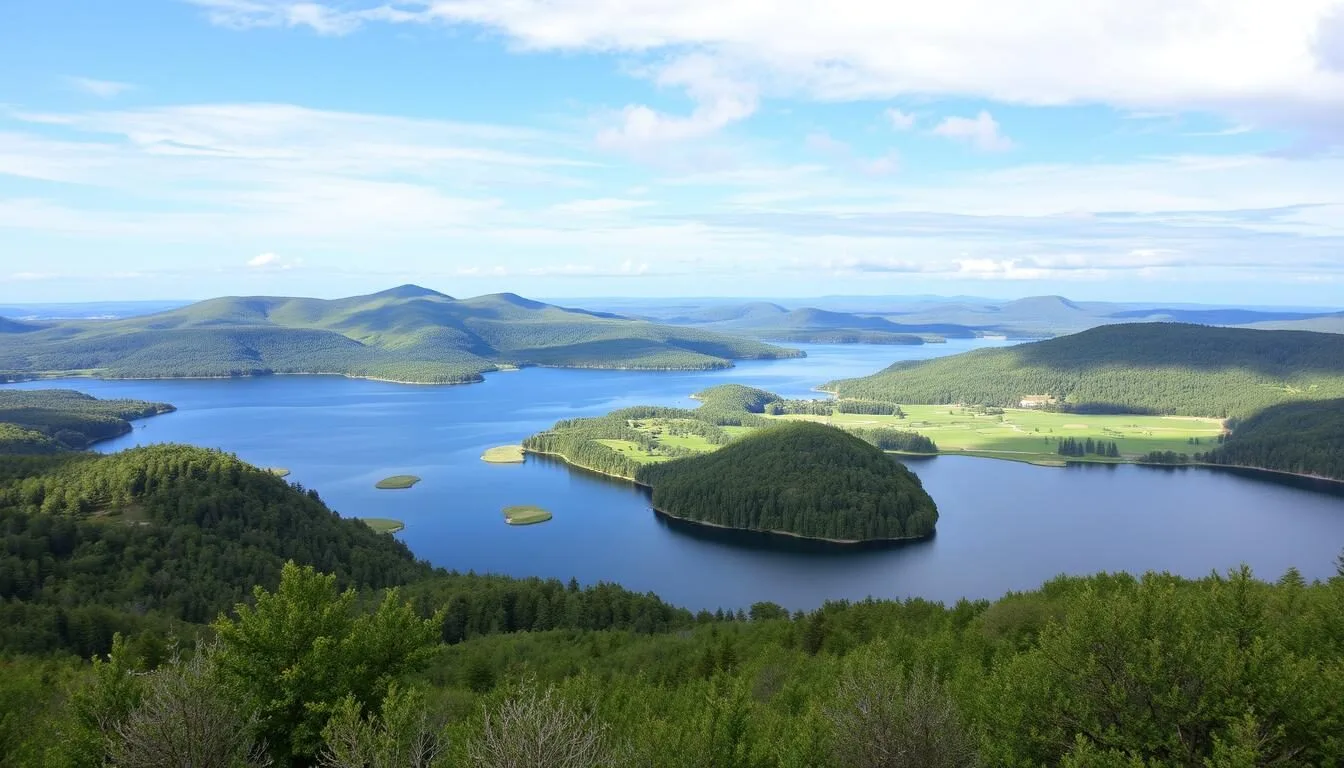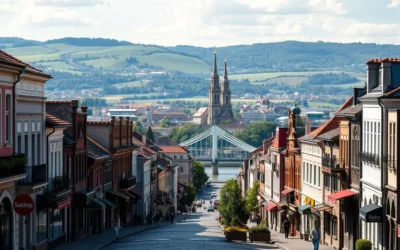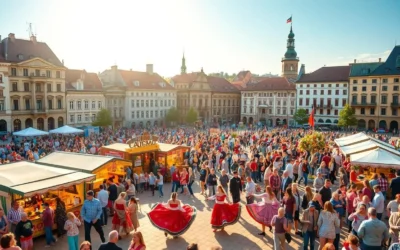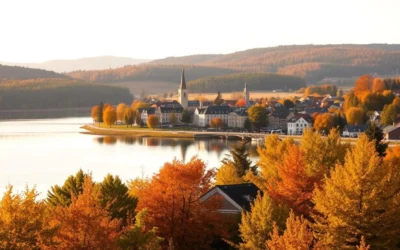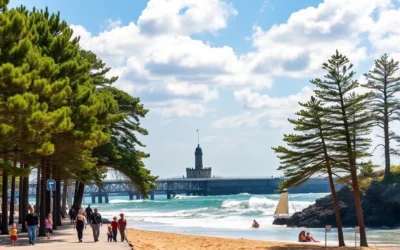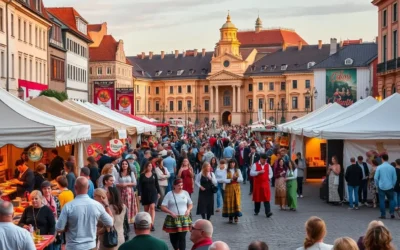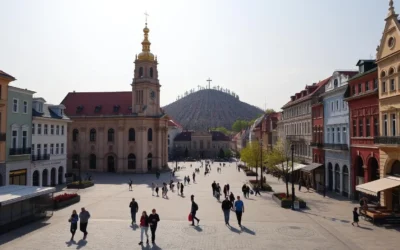✓ Accommodations✓ Flights✓ Rental Cars
Aukstaitija National Park, Lithuania’s oldest national park, is a haven for nature lovers and those seeking an authentic countryside experience. The park is renowned for its pristine natural landscapes, crystal-clear lakes, and pine forests that are teeming with life.
The park boasts over 126 lakes, some with pine stands over 200 years old, creating a paradise for hikers and nature enthusiasts. Scattered throughout the park are over 116 villages, some dating back to the 14th century, where time-honored crafts like beekeeping, wood carving, and textile weaving are still practiced.
Aukstaitija National Park offers a perfect escape into nature with its stunning landscapes of forests, lakes, and traditional villages that showcase the authentic Lithuanian countryside. You’ll discover why this national park is considered one of Lithuania’s hidden gems, with pristine natural beauty that remains largely untouched by mass tourism.
Top Experiences in Aukstaitija National Park:
- Aukstaitija National Park offers a diverse range of activities for all seasons, from swimming and kayaking in summer to cross-country skiing in winter.
- You’ll learn about the rich cultural heritage preserved within the park’s boundaries, including ancient crafts and traditional Lithuanian rural life.
- This guide will walk you through the top experiences in Aukstaitija National Park, helping you plan an unforgettable visit to this remarkable destination in northeastern Lithuania.
By exploring Aukstaitija National Park, you’ll not only experience the natural beauty of the Lithuanian countryside but also gain insight into the country’s rich cultural traditions.
Discovering Lithuania’s Oldest National Park
As you step into Aukštaitija National Park, you’re entering a world of untouched natural beauty. This park is not just a destination; it’s an experience that connects you with nature in its purest form.
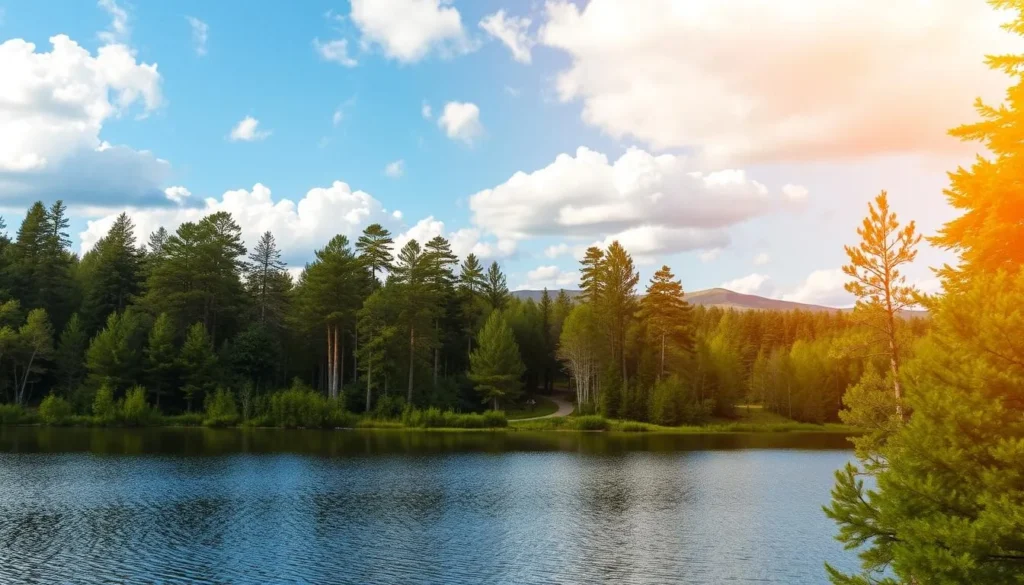
The Land of Lakes and Forests
Aukštaitija National Park, known as the “land of lakes,” boasts over 126 lakes that dot the landscape, providing perfect settings for swimming, fishing, canoeing, and kayaking adventures. The dense forests, some with pine stands over 200 years old, create a paradise for hikers and nature lovers. The park’s diverse landscapes include ancient pine forests, crystal-clear lakes, winding rivers, and rolling hills that showcase the natural beauty of Lithuania’s countryside.
- You’ll explore Lithuania’s first and oldest national park, established in 1974 to protect the region’s unique ecosystem and cultural heritage.
- The park’s nickname “the land of lakes and forests” perfectly captures its essence, with numerous lakes scattered throughout dense pine forests.
When to Visit Aukštaitija National Park
The best time to visit Aukštaitija National Park depends on your interests. Summer (June-August) offers perfect conditions for swimming and water activities, while autumn (September-October) transforms the forests into a spectacular display of colors. Winter provides opportunities for cross-country skiing on frozen lakes, making it a year-round destination for outdoor enthusiasts.
Planning your time visit to this national park in the country of Lithuania will be a memorable experience, with its rich biodiversity and natural beauty on full display.
Explore the Crystal-Clear Lakes of Aukstaitija

With its numerous pristine lakes, Aukstaitija National Park is a paradise for water enthusiasts and nature lovers alike. The park boasts over 126 lakes, each offering a unique experience amidst the stunning natural beauty of Lithuania.
Kayaking and Canoeing Adventures
The lakes of Aukstaitija are perfect for kayaking and canoeing adventures. You can rent equipment at various locations around popular lakes like Lake Baluošas and Lake Tauragnas, Lithuania’s deepest lake. Explore the interconnected lake systems via small rivers and streams, creating the perfect water trail adventures that allow you to discover hidden beaches and secluded shorelines.
Fishing in Lithuania’s Pristine Waters
Fishing enthusiasts will appreciate the abundance of fish species in these pristine waters, including pike, perch, bream, and the prized zander. Fishing permits are readily available for visitors, making it easy to enjoy this popular activity. The lakes offer different experiences throughout the day, from misty, peaceful mornings perfect for fishing to sunny afternoons ideal for swimming and evening paddles when the water’s surface turns golden with the setting sun’s reflection.
The exceptional clarity of Aukstaitija’s lakes allows you to see several meters deep into the pristine waters that reflect the surrounding forests and sky, making every moment on the lake a memorable experience.
Hiking Through Ancient Pine Forests
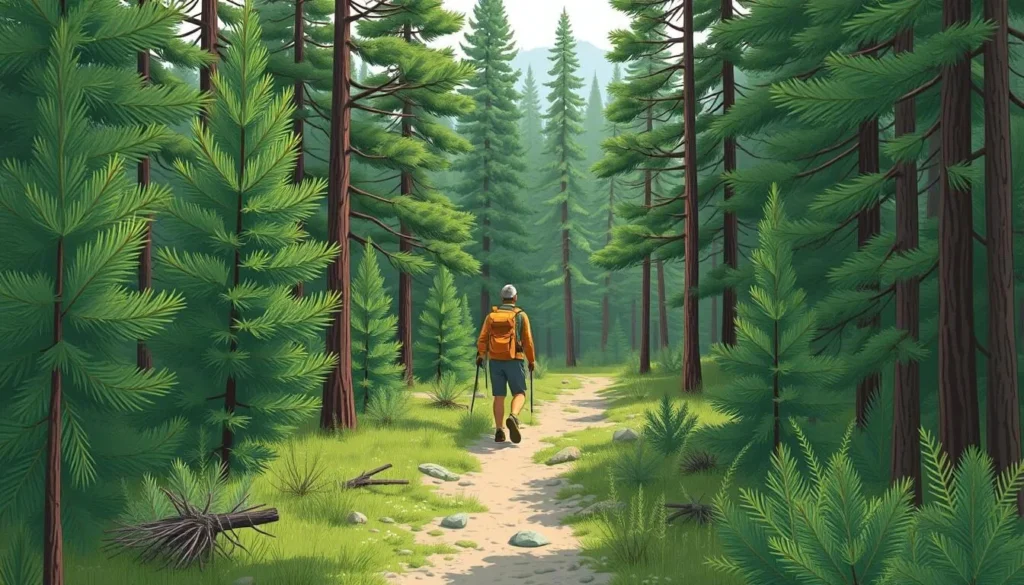
Immerse yourself in the tranquility of Aukstaitija National Park’s pine forests, where the air is crisp and the scenery is breathtaking. The dense forests, some with pine stands over 200 years old, create a paradise for hikers and nature lovers. As you walk through these ancient woods, you’ll be surrounded by the sights and sounds of a thriving ecosystem.
Best Trails for Nature Lovers
The park features numerous trails that wind through the ancient forests, offering something for every level of hiker. From easy nature walks suitable for families to more challenging routes that take you deep into the forest’s heart, the options are vast. The Ladakalnis Trail is particularly recommended, leading you to one of the park’s highest points with panoramic views over seven lakes – a breathtaking perspective on the region’s unique landscapes.
Wildlife Spotting Opportunities
As you hike through the area‘s ancient forests, keep an eye out for the diverse wildlife that calls this place home. Patient hikers might glimpse roe deer, elk, wild boar, foxes, and even the occasional wolf or lynx. Birdwatchers will be delighted by the variety of species, including black storks, white-tailed eagles, and various woodpeckers that can be spotted along the forest trails, especially during early morning hikes.
Visit Traditional Lithuanian Villages
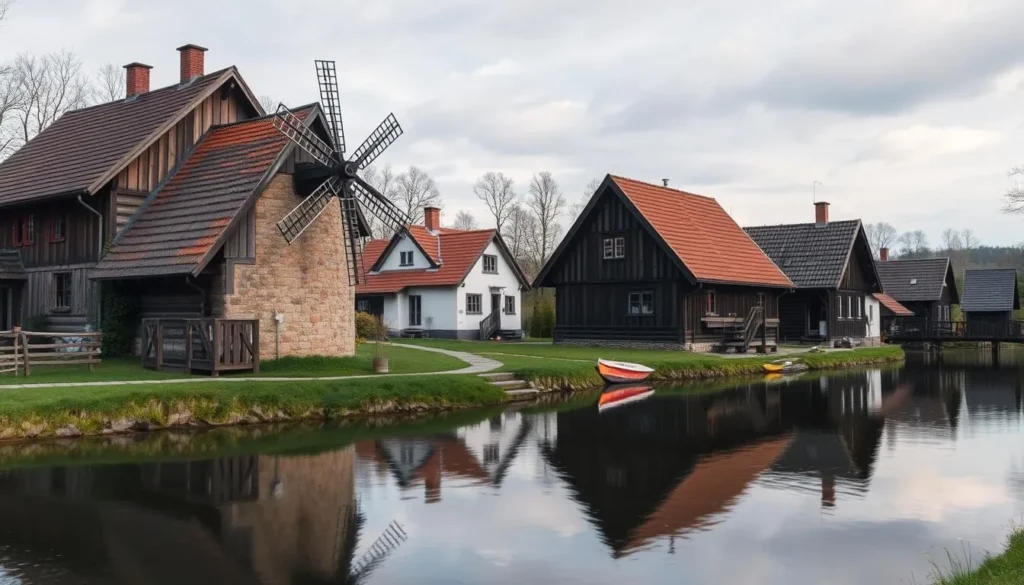
As you explore Aukstaitija National Park, you’ll discover over 116 traditional villages scattered throughout the area, some dating back to the 14th century. These villages offer a unique glimpse into Lithuania’s past, with time-honored crafts like beekeeping, wood carving, and textile weaving still practiced today.
Exploring Ginučiai and Stripeikiai
The villages of Ginučiai and Stripeikiai are particularly worth visiting, showcasing traditional wooden architecture and cultural attractions. In Ginučiai, you’ll find a well-preserved 19th-century watermill that tells the story of the area’s industrial heritage. The watermill is a marvel of engineering and a testament to the region’s rich history.
In Stripeikiai, the Ancient Beekeeping Museum is a must-visit, offering insights into Lithuania’s unique beekeeping traditions. You’ll learn about the history and techniques of beekeeping and even get to taste some of the locally produced honey.
Meeting Local Craftspeople
As you visit these traditional villages, you’ll have opportunities to meet local craftspeople who continue ancient traditions. You’ll see wood carvers, weavers, potters, and herbalists demonstrating their skills and sharing stories about village life. This is a chance to experience authentic Lithuanian country life and learn about the crafts that have been passed down through generations.
Some villages offer workshops where you can try your hand at traditional crafts or sample locally produced foods like cheese and bread. This immersive experience will give you a deeper appreciation for the region’s culture and heritage.
Visiting these traditional Lithuanian villages is like stepping back in time, allowing you to experience the country’s rich cultural heritage in a unique and memorable way.
Experience the Ancient Beekeeping Museum
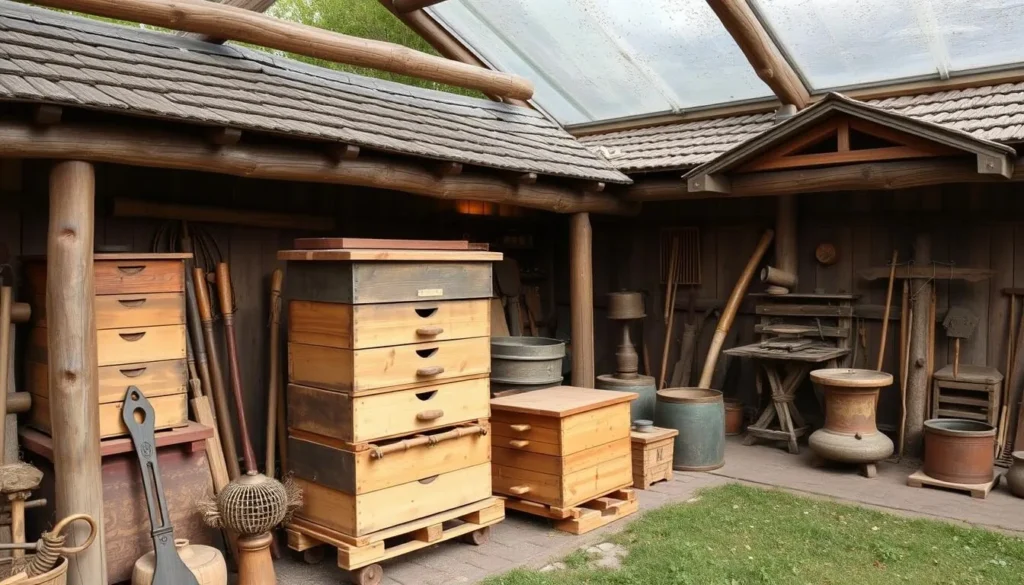
As you explore Aukstaitija National Park, you’ll discover a unique cultural gem: the Ancient Beekeeping Museum. Located near Stripeikiai, this museum is the only one of its kind in Lithuania, dedicated to the history and practices of beekeeping.
The History of Lithuanian Beekeeping
Lithuania has a rich beekeeping heritage that spans centuries. The museum showcases this history through an impressive collection of traditional beehives, including hollow log hives used by Lithuanian beekeepers since ancient times. You’ll learn about the significance of beekeeping in Lithuanian culture and economy, as well as the spiritual importance of bees in folklore and mythology.
Beekeeping has been an integral part of Lithuania’s rural economy and cultural identity, with bees considered sacred messengers between the human world and the divine.
Interactive Exhibits and Honey Tasting
The museum offers a range of interactive exhibits where you can observe live bees at work, safely behind glass, and try on beekeeping equipment to understand the process of honey production. Your visit culminates in a honey tasting experience, sampling different varieties of local honey, each with distinct flavors reflecting the diverse flora of the national park.
The honey tasting is a sweet conclusion to your visit, showcasing the rich flavors of Lithuania’s natural bounty.
Discover the 19th-Century Watermill in Ginučiai
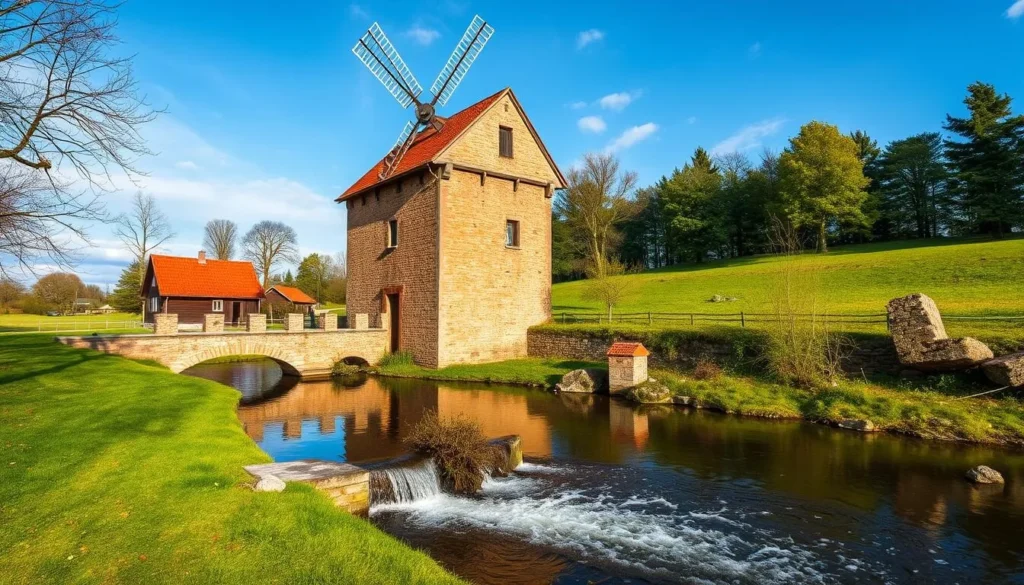
Step into the 19th-century watermill in Ginučiai and experience the ingenuity of traditional Lithuanian engineering. This well-preserved relic of the past is a must-visit attraction in Aukstaitija National Park, offering a unique glimpse into the region’s industrial heritage.
The Engineering Marvel of the Past
The watermill in Ginučiai is an exemplary model of 19th-century engineering, harnessing the power of the Linkmenas stream to operate its massive millstones. You’ll be impressed by the ingenious mechanism that once ground grain for the surrounding villages. The mill’s wooden water wheel and complex system of gears are remarkably preserved, showcasing the resourcefulness of past generations.
As you explore the mill, you’ll follow the journey of grain from storage to the grinding process and finally to flour collection, gaining insight into the importance of watermills in pre-industrial Lithuania.
Cultural Significance and Preservation
The 19th-century watermill in Ginučiai is not only an engineering marvel but also a culturally significant landmark. It served as a community gathering place and vital economic center in rural Lithuania. The preservation efforts that saved this historic structure demonstrate Lithuania’s commitment to maintaining its cultural heritage.
During your visit, knowledgeable guides will explain the restoration process and ongoing conservation challenges, providing a deeper understanding of the mill’s importance in the region’s history and cultural identity.
Stay in an Authentic Wooden Cabin by the Lake
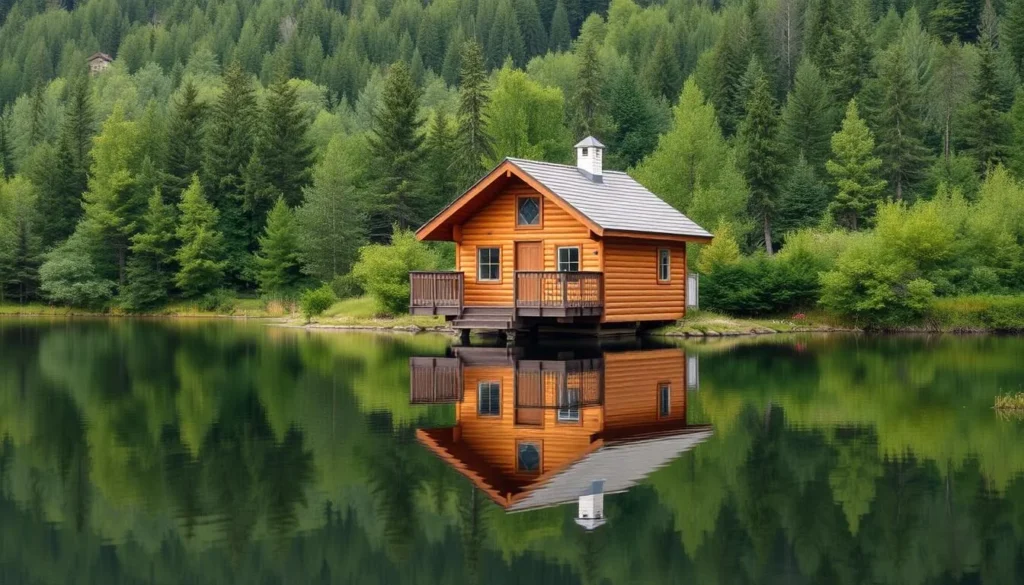
Imagine waking up in a cozy wooden cabin by the serene lakes of Aukstaitija National Park. The sound of birds chirping and the gentle lapping of the water against the shore create a perfect morning ambiance. These authentic wooden cabins offer a unique chance to immerse yourself in nature while enjoying modern comforts.
Rustic Accommodations with Modern Comforts
The cabins in Aukstaitija National Park, such as those on Kemėšys Lake, blend rustic charm with modern amenities. You’ll find features like fireplaces, fully equipped kitchens, and private piers extending into the lake. These accommodations strike a perfect balance between wilderness immersion and comfort, ensuring a relaxing stay.
Many cabins are equipped with hot showers, well-stocked kitchens, and cozy fireplaces to warm chilly evenings. The use of natural materials in their construction adds to the authentic Lithuanian experience.
Waking Up to Lakeside Views
One of the highlights of staying in these cabins is the breathtaking views they offer. From the lush greenery of summer reflected in calm waters to the snow-covered landscapes of winter, the scenery changes with the seasons. You can enjoy morning coffee on your private pier, watch the mist rise from the water, or spend evenings fishing directly from your temporary home.
The strategic locations of the cabins allow you to experience the park’s transformation from day to night. Enjoy spectacular sunsets giving way to star-filled skies unmarred by light pollution, perfect for stargazing and connecting with nature.
Relax in a Traditional Lithuanian Smoke Sauna
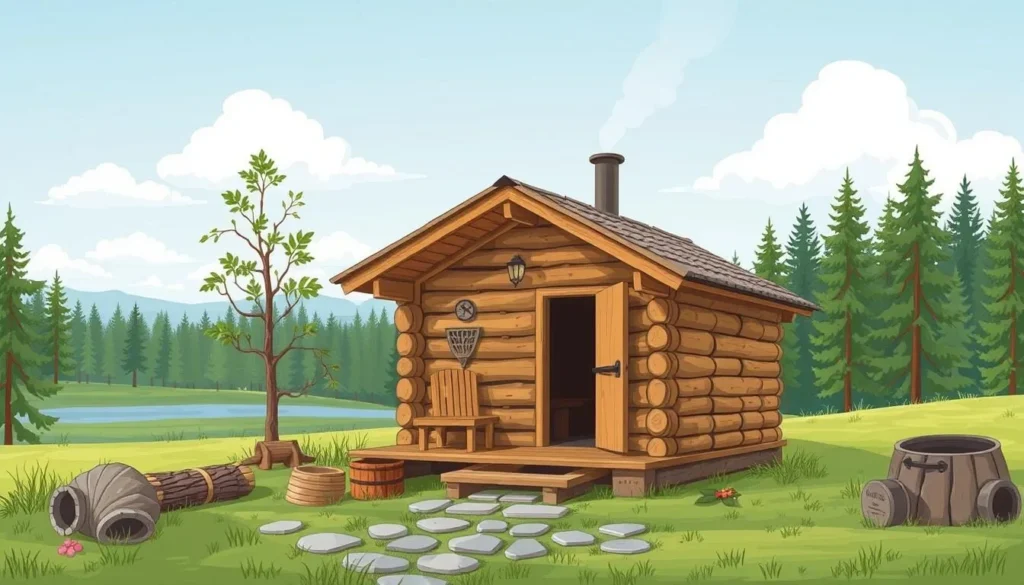
In the heart of Aukstaitija National Park, discover the rejuvenating ritual of a traditional Lithuanian smoke sauna. This ancient practice, known as savusauna, offers a unique wellness experience that combines physical purification with a deep connection to Lithuania’s cultural heritage.
The Ancient Ritual of Savusauna
The savusauna is a special type of sauna without a chimney, where wood is burned until the room is filled with smoke. Once the sauna is hot enough, the fire is allowed to die, and the smoke is ventilated out, leaving the residual heat to warm the space. This traditional method creates a distinctly different atmosphere from modern saunas, offering a serene and rejuvenating experience.
Health Benefits and Cultural Experience
The intense heat and steam of the smoke sauna provide numerous health benefits, including improved circulation, respiratory function, stress reduction, and muscle relaxation. Moreover, this cultural experience connects you with centuries of Lithuanian tradition, as smoke saunas have been central to rural life for generations, serving as places for physical purification, social gathering, and even spiritual rituals.
You’ll have the opportunity to learn the proper sauna etiquette and traditional practices, including the use of birch branches (vanta) for gentle self-massage, which improves circulation and cleanses the skin. The ritual begins hours before your arrival, as the sauna master carefully builds and maintains a fire in a chimney-less room, filling it with smoke that later dissipates but leaves its aromatic essence in the walls.
By experiencing a traditional Lithuanian smoke sauna, you’re not only rejuvenating your body but also immersing yourself in a rich cultural ritual that has been passed down through generations in this beautiful country.
Taste Authentic Lithuanian Cuisine

In the heart of Aukstaitija National Park, you’ll discover a culinary journey that highlights the best of Lithuanian cuisine, from hearty dishes to local beverages. The region’s agricultural heritage is reflected in its farm-to-table dishes, which are made with locally sourced ingredients.
Local Delicacies to Try
Lithuanian cuisine features a variety of local delicacies that you shouldn’t miss. Some of the must-try dishes include cepelinai (potato dumplings filled with meat), šaltibarščiai (cold beet soup), and kugelis (potato pudding). These dishes are often served with locally sourced ingredients, such as freshly caught fish from the park’s lakes, wild mushrooms, and berries from its forests.
Farm-to-Table Dining Experiences
The farm-to-table dining experiences available in Aukstaitija National Park offer a unique opportunity to connect directly with local food producers. Some farmsteads provide meals where everything served comes from within a few miles of your table. You can enjoy these authentic dining experiences at local restaurants and farmsteads, where traditional recipes are used to prepare delicious meals.
Don’t miss the chance to sample local beverages that complement the cuisine, including homemade fruit wines, traditional Lithuanian beer (alus), and gira (a fermented bread drink) that locals have enjoyed for centuries.
Planning Your Visit to Aukstaitija National Park
To truly enjoy Aukstaitija National Park, you need to plan your visit carefully, taking into account the time of year and your budget. Located about 100 kilometers north of Vilnius, Lithuania’s capital, the park is easily accessible by car or public transportation.
The best time to travel to Aukstaitija is from May to September for favorable weather conditions ideal for outdoor activities. However, each season offers its unique charm, from spring wildflowers to winter snow activities, making it a great destination for any trip.
When planning your trip, consider that the park caters to various budget levels, with free entrance to the park and modest fees for specific attractions. You can stay at least 2-3 days to fully experience the park’s diverse offerings, or a week for a more relaxed pace.
By planning ahead and packing appropriately for your chosen activities, you’ll be able to make the most of your visit to this beautiful national park.
—
The above is subject to change.
Check back often to TRAVEL.COM for the latest travel tips and deals.
